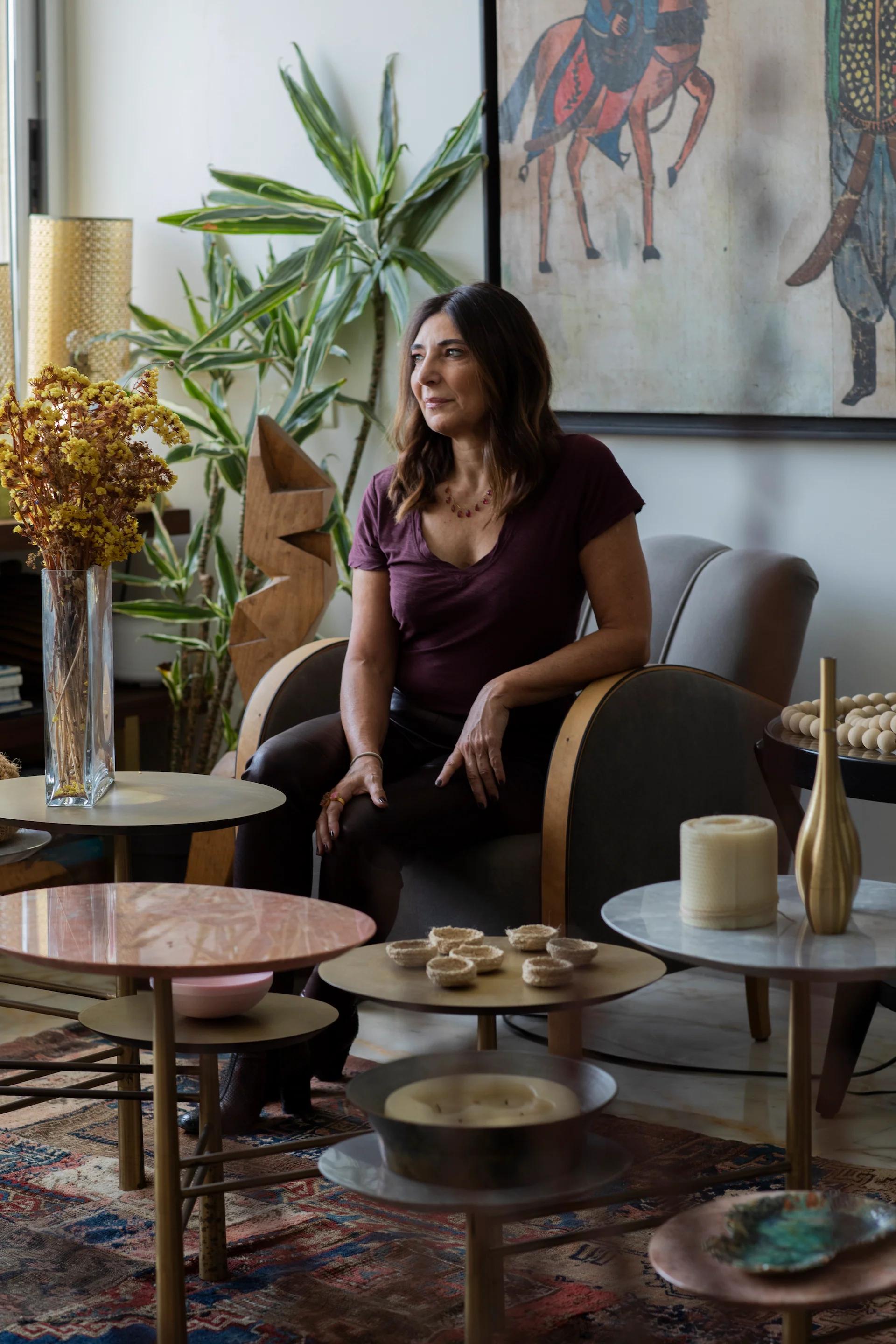CURRICULUM VITAE MAY 12 2022
by Design Miami
Gallerist Bernard Goldberg shares his passion for the craft and artistry of early 20th century American art and design

BERNARD GOLDBERG
Photo by Alexei Hay
Bernard Goldberg has been collecting early 20th-century American art and design for over 50 years, yet his enthusiasm feels newly minted, as if he just laid eyes for the first time on the winking geometries of a Tiffany lamp or the humming watercolors of a Burchfield.
“There’s a sense of immediacy, sensuality,” Goldberg says of the period roughly spanning 1900 to 1950. “It’s about painting what you feel—broad strokes. The excitement of getting thoughts onto canvas.”

WOOD GAYLOR, PICNIC, SHAKER LAKE, ALFRED MAINE, 1923
Courtesy of Bernard Goldberg Fine Arts
For Goldberg, this timeframe is about the paring down of excess—whether it is the gritty urban scenes of the Ashcan School, the chunky carpentry of Mission Furniture or the “quick line and curve” of an Ina Nadelman sculpture. “Everything [prior] was a little fussy and contrived, [while] this was a complete departure from what Europeans and Americans were buying at the time,” he says.
Goldberg, who began collecting with his late wife in the 1960s (their first acquisition was George Bellows’s oil Cyrus Jones’ Place), worked first as a lawyer and a real estate developer, transforming rundown buildings into boutique hotels before opening his Manhattan gallery, Goldberg Fine Arts, in 1998.

SAMUEL YELLIN/ TRANSOM, IN WROUGHT IRON, FROM THE J. WALTER THOMPSON OFFICES AT THE GRAYBAR BUILDING,420 LEXINGTON AVENUE, NEW YORK
Photo courtesy of Bernard Goldberg Fine Arts
There was a strong design element to the hotel business, Goldberg says, and the blend of design, fine art, and decorative arts he curated for hotel properties later informed his work as a gallerist. He continues to show everything from wrought iron gates by Samuel Yellin ()to paintings by Reginald Marsh, Stuart Davis, and William Glackens.
Works by contemporary artists may dominate today’s art market news, but a steady and increasing group of collectors appreciate the artists he shows. “It’s very lasting and it only increases in interest. Early Hopper, Glackens, [Everett] Shinn, have increased tremendously in value...”


TOP: BERNARD GOLDBERG FINE ARTS PRESENTATION AT DESIGN MIAMI | BOTTOM: A GILT WEATHERVANE OF MOLDED COPPER SHEETS IN THE FORM A PEACOCK THAT ONCE BELONGED IN THE COLLECTION OF FLORENCE KNOLL BASSETT
Courtesy of Bernard Goldberg Fine Arts
Goldberg confesses much of the newly made work he encounters at fairs or in the homes of collectors appears to him like the emperor’s new clothes. “I’ll be at somebody’s home and there’s this big white canvas and they’re really excited about it and I readily admit, I just don’t get it.”
There’s a strong element of craft, of artistry to works from the early 20th century, and a historical specificity that Goldberg can instantly recognize. Recently, he discovered two American painters from the period who had largely been forgotten. Renwick Taylor, who worked at the Long Island estate and art studio of Louis Comfort Tiffany and was influenced by his stained-glass designs; and Wood Gaylor who painted vibrant scenes of costume balls and auction houses, his tableaus teeming with saturated reds, greens, and blues and quirky, folk-art-inspired figures.

RENWICK TAYLOR/ JONQUIL, 1925
Courtesy of Bernard Goldberg Fine Arts
“It’s exciting,” Goldberg says. “You have a hand in changing the public perception of the artist.” Discoveries like these sometimes happen by chance, by searching the web or reading about the lives of contemporaries, but the process ultimately relies on the same seasoned eye Goldberg has developed over five decades of collecting and showing work. “I see it and it’s yes or no. It’s that simple and it’s always immediate.”
This story was written by Sophie Kalkreuth, and first appeared in the latest Design District Magazine, Issue 1 2022. It has been slightly edited.


